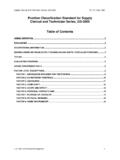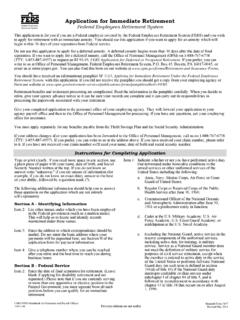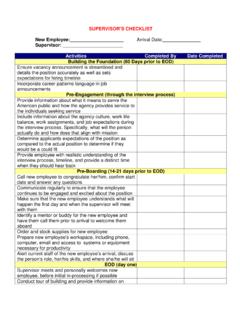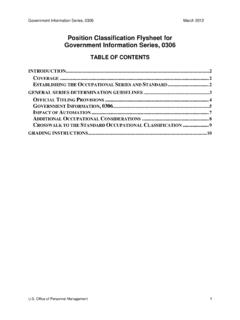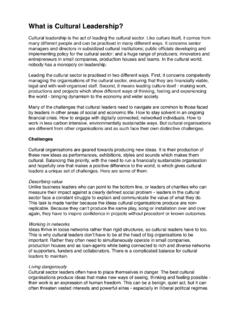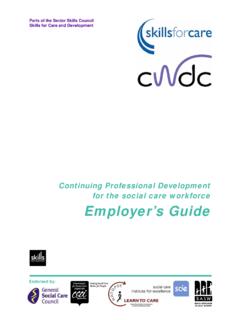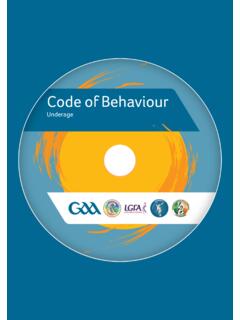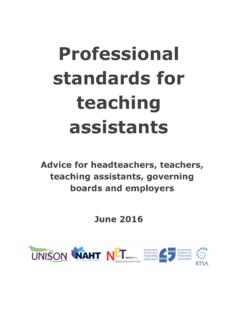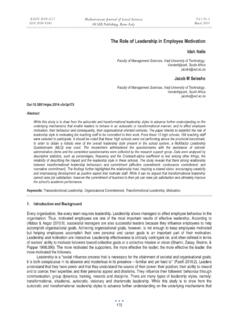Transcription of How Coaching and Mentoring Can Drive Success in Your ...
1 1 HOW Coaching & Mentoring CAN Drive Success IN YOUR ORGANIZATION WHITE PAPER BY LIS MERRICK Managing Director, Coach Mentoring , for Chronus Corporation Mentoring & Talent Development Solutions 2 HOW Coaching & Mentoring CAN Drive Success IN YOUR ORGANIZATION SUMMARY Increasingly, organizations are realizing the many benefits of developing talent through Coaching and Mentoring programs. However, questions often arise about the use of each method, how these methods can support talent development, and the tools available for running programs. This whitepaper identifies the key differences between Coaching and Mentoring , how to use these methods in your organization, real world examples of Success , and the new toolsets that are available. Read on to discover how your organization can better create, manage, and run effective talent development programs. THE TALENT DEVELOPMENT CHALLENGE Despite the enormous effort companies dedicate to talent development, many find that their pipeline of employees ready to assume key positions is insufficient as their organizations expand and grow.
2 Those organizations who are successful in developing their talent tend to focus in three main areas: 1 A defined process for talent selection and leadership development, which supports strategic business and human capital objectives. 2 A culture where employees feel emotionally engaged with their work and want to remain, learn, and grow. 3 A demonstrated commitment to develop, support and advise individuals through Coaching and Mentoring , thereby ensuring a continuous process of development, feedback, and positive learning energy focused on employees. Today companies are turning to Coaching and Mentoring programs to develop talent. These programs harness the value of internal employee resources to develop others, which saves time, cost, and increases overall employee satisfaction. In fact, 71% of Fortune 500 companies offer Mentoring to their , how do organizations decide which combination of Coaching and Mentoring dialogues to use?
3 And digging deeper, what types of Coaching and Mentoring programs? 3 HOW Coaching & Mentoring CAN Drive Success IN YOUR ORGANIZATION WHAT IS CORPORATE Coaching , EXACTLY? Coaching helps an employee get the best performance out of themselves the potential for which was already there. There are two types of coaches: an internal coach or a professional external coach. This graphic explains the differences and advantages of each. INTERNAL COACH INDIVIDUAL LINE MANAGER OR INTERNAL PROFESSIONAL COACH ATTRIBUTES Specially trained internal coach Champions of Coaching within the organization In alignment with organizational talent development agenda Cost effective, especially when Coaching large numbers of employees EXTERNAL COACH MOST OFTEN PROFESSIONAL COACHES ATTRIBUTES Works outside of the organization Offers value of wider experience and independent approach Maintains confidentiality Can provide fresh ideas and knowledge Often offer more experienced Coaching skill set Primarily aimed at developing skill competence and improving performance in specific areas, Coaching engagements for talent development are short term, focused programs.
4 With more finite and tangible learning delivered through Coaching , the development and performance goals set over shorter periods of time help the high-potential person develop within the various stages of their career progression. THE ROI FOR COMPANIES WHO INVEST IN Coaching IS 7X THE INITIAL INVESTMENT PricewaterhouseCoopers Global Survey on Coaching , 2011 IF THAT IS Coaching , THEN WHAT IS Mentoring ? The majority of talent programs will also use Mentoring as a complementary learning method with Coaching . Mentoring is an incredibly powerful tool for individuals who want to learn and grow within an organization. Moving or preparing to move into a new role, taking on new responsibilities, building confidence to develop your career further, or working in a new environment all seem much easier with a mentor to support you. There are different schools of Mentoring ranging from non-directive to sponsor Mentoring . In a non-directive model, the mentor acts as a sounding board, a catalyst for the individual s learning and perhaps a role model.
5 In a sponsor model, a more senior person promotes, oversees and takes control of a junior prot g s career. Having an understanding of both schools of Mentoring can be very helpful when choosing what type of Mentoring to use in talent development. Often a mixture of developmental and sponsorship Mentoring can provide the most effective methods to support your organizational talent across all 4 HOW Coaching & Mentoring CAN Drive Success IN YOUR ORGANIZATION DIRECTIVE - MENTORS INFLUENCE SPONSOR GUIDE PROFESSIONAL FRIEND PERFORMANCE COACH CHALLENGER ROLE MODEL ORGANIZATIONAL MENTOR SOUNDING BOARD THINKING PARTNER NON-DIRECTIVE - MENTEE DRIVEN PSYCHOSOCIAL CAREER SUPPORT SUPPORT Mentoring programs can range from full prot g sponsorship to self-directed role modeling. contexts and cultures. However, it is critical to obtain buy-in from all parties executive decision makers, mentors and mentees for the mix of sponsorship/developmental Mentoring you utilize.
6 Otherwise, you risk that some Mentoring pairs will follow a different Mentoring path than that of their colleagues. Mentoring programs have a longer time horizon than Coaching and concentrate more on career development, leadership development, and knowledge transfer versus individual skill development or immediate performance improvement. RETENTION IS 25% HIGHER FOR EMPLOYEES WHO HAVE ENGAGED IN COMPANY SPONSORED Mentoring Deloitte Research Brief, 2012 Mentoring is used most often to help people transition between career stages. It is invaluable as a tool to support individuals who are being fast tracked or accelerated into more senior leadership roles, particularly as it can focus on developing the whole person and has a wider-angled lens than Coaching . Coaching PROGRAMS Shorter term: week, month Session-based One-way: coach to employee Good for specific skill development, such as management training or other job-related skills Good for performance improvement in areas such as diversity training Mentoring PROGRAMS Longer term: months, years Relationship-based Multiple ways: peer-to-peer, senior to junior, junior to senior Good for whole person development, such as overall career development or high potential employee development Good for knowledge sharing and role modelling between employees Coaching VS.
7 Mentoring PROGRAMS Mentoring can promote mutual learning to challenge and stimulate employees at all levels within the organization. 5 HOW Coaching & Mentoring CAN Drive Success IN YOUR ORGANIZATION EMPLOYING Coaching AND Mentoring PROGRAMS IN YOUR ORGANIZATION There is no one perfect model for every organization. When designing a program, keep both Coaching and Mentoring in mind and identify: 1 Your program goals. Are you developingtomorrow s leaders? Or working on educating employees about certain procedures? Identify your key objectives. 2 Desired outcomes. What do youwant the results to be? Improved performance now? Longer-term management skill development? 3 The methods to achieve the outcomes. For skills training, a month-long Coaching program may be the method. For succession planning, perhaps a longer Mentoring type of program will work better. When deciding to employ Coaching , Mentoring , or possibly both, consider the Five Cs : Contract How directive does the organization want to be with the individual s development?
8 Are these voluntary programs or not? Context What are the business objectives to be fulfilled by the program? Stage of career development, succession planning, etc. Culture How credible are Coaching and Mentoring within the culture? Are senior executives available to serve as mentors? Do you have senior level support for your program? Circumstance What sort of budget does the organization have for talent development? Can the objectives just be outsourced to external coaches? Content: What subject matter will be discussed within the Coaching or Mentoring relationships? Understanding the possible content will help determine the type of developmental dialogue to employ. Identifying these parameters up front will help point you to the types of Coaching and Mentoring programs that will work for your organization. In our experience, many talent development programs employ both methods. One company may provide their high potential people with a mentor; others will supplement this with a coach (internal or external) or ensure the individual s line manager is providing robust Coaching support to them.
9 Some companies offer a sponsor and a mentor, or a sponsor and an external coach. The combinations are numerous and the best way to combine Coaching and Mentoring depends on the organizational context, culture and commitment to these tools. Here are a few examples of how our client organizations are using Coaching and Mentoring to Drive talent development: An international electricity and gas company is using a combination of a sponsor and developmental mentor to support their key talent. In a survey, the majority of participants felt that the Mentoring program supported their engagement with the organization as well as their career development. A retail bank with 2800+ branches employed Mentoring as a platform to run eight different talent development programs including leadership development and diversity training. Engaged, enthusiastic employees boosted the participation to 50% higher than expected. 6 HOW Coaching & Mentoring CAN Drive Success IN YOUR ORGANIZATION A large aerospace firm implemented employee career development Mentoring and technical knowledge transfer, engaging more than 10,000 of their global employees and resulting in increased employee satisfaction and program expansion.
10 A Danish media company used developmental Mentoring and line manager Coaching . In an evaluation, all parties surveyed said they had benefited greatly from the Mentoring programme. The mentors reported enjoying the two-way learning gained from their interaction with their mentees. A large financial services organization implemented a senior role model developmental Mentoring program, supplemented by external coaches. This program resulted in improved employee retention. Each of these organizations relied on Coaching and Mentoring as their methods for achieving their talent development program goals. A LOOK AHEAD: FINE TUNING THE MANAGEMENT OF Coaching AND Mentoring PROGRAMS The impact of Coaching and Mentoring programs within organizations is proven. However, effectively managing these programs can still be a challenge. Manual management using spreadsheets is not effective or scalable. Talent management software vendors can provide some tracking capability, but do not provide Coaching and Mentoring program workflows to help guide these programs.




